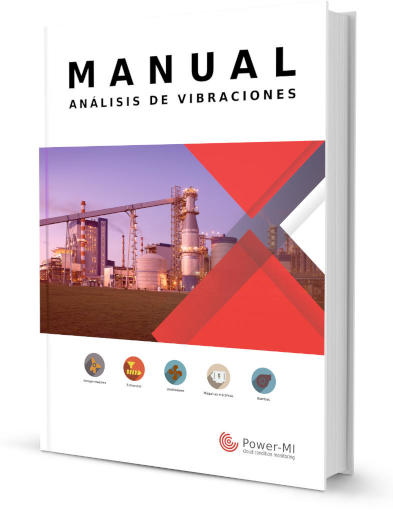Traditionally, visual inspection reports have been paper forms filled out by hand by the inspector. Recommendations were generally written in cases where abnormalities or malfunctions were detected in the asset. The final destination of these sheets of paper was a tray where only the reports containing recommendations were extracted. The rest of the information was lost on paper.
In this section, the parts that a visual inspection report should have been proposed. In the design of visual inspections, each part of the report should be considered or not included.
The purpose of a visual inspection report is to:
- Communicate the result of the visual inspection.
- Lay the foundation for creating a work order.
- Document asset status, measurement parameters, and fault detection.
The parts that a visual inspection report can contain are detailed below.
Report reference
The reference is the name or contract number to which the report corresponds, the inspection route, the inspection periodicity, the cause of the inspection, work order, application number, name of the applicant, the department that has requested the analysis, project name, internal reference.
Some examples of the “Report Reference” field that users use are:
- "Quarterly Test"
- "Contract 2020-001"
- "Test 202006"
- "Stop 2020 Second Quarter"
- "WO CM03449"
The report date can be used as a report reference.
Measurement date
This is the date the visual inspection was performed. That is when the inspector took the data and evaluated the inspection points. Please note that the date format can be configured in the user settings.
Analysis date
It is the date the report was made. If the report took more than one day, write the date it was completed. The inspectors who do the visual inspection using a mobile application for visual inspections, make the report automatically from the application at the same time that they do the inspection of the asset.
Introduction
The introduction is the context under which the visual inspection of the asset is performed. Many inspectors use this field to record the scope, reasons, and requester of the inspection. If they are in-depth analysis reports, the methodology to be used should be briefly specified.
Some examples of the "Introduction" field that users use are:
- "Visual inspection of annual contract 2020"
- “Inspection at the request of the Pickling staff to verify the start-up of the blowing fan”
- "Inspection for complementary study in pipes connected in multi-stage pump requested by production manager"
- "Monitoring of parameters between 03/01/2020 and 04/01/2020"
Workplace Hazards
The inspector will have to read and understand the safety and health risks in the workplace. Risks can be included in the report for information.
Measurements
The inspector must enter the values of the parameters configured in the inspection. Unless otherwise specified, these values must be what they have at the moment of the reading read directly from an instrument, whether permanently installed or portable, that the inspector carries with him. Note that readings must be entered in the units indicated in the setup.
Similarly, images or photos of measurements that are relevant, abnormal, or evidence can be added to the inspection report.
An overview of the images or photos of measurements included in the visual inspection report can be added if you want to specify the reason for including such an image.
Along with the measures, you can also add comments such as:
- "Broken manometer"
- "Unusual High RPM"
- “Color not included in the scale”
- "There is no oil in sight glass"
- "Flow at zero"
Fault diagnosis
Visual inspections are carried out by inspection guidelines with their measurement points. Faults associated with them are defined for each checkpoint. The inspector must evaluate each failure associated with a checkpoint.
This section of the report shows the Failure assessment for inspection guidelines.
Evolution
The inspector can report how the measured levels are compared to previous measurements. She can also add the evolution of a measurement point, failure, or general condition of the asset with respect to previous inspections.
Some examples of the "Evolution" field that users use are:
- "Improved overall cleaning condition"
- "Rising temperature levels"
- "Unusual noise level and pattern with no source identified"
- "Lower flow compared to other inspections"
Diagnosis
The visual inspection diagnosis is usually shown first as a phrase or headline and then a detailed explanation.
Some examples of the diagnosis holder are:
- "Seals water leakage"
- "Everything OK"
- "Dirt on the bushings"
- "Gearbox with high temperature"
In the detailed explanation, the diagnostic evidence is usually mentioned, preferably referring to the measures or failures found, the diagnostic criteria, the degree of certainty, or the degree of magnitude of the failure or condition.
Asset condition
The asset condition is the result of the Asset condition assessment that the inspector makes according to design criteria for visual inspections or according to ISO 10816.
Recommendations
This is the most important part of the visual inspection report. Recommendations are the actions to be taken on the asset to improve its condition.
Recommendations can be classified according to the task:
- Corrective: they are aimed at eliminating the cause of the failure or abnormal operating condition.
- Proactive: they are executed to improve the condition of the asset even if the asset is in a “Good” or “Acceptable” state.
- Verification: they are suggested to verify or improve the certainty of the diagnosis made in the analysis.
- Follow-up: they are suggested when the asset must be continuously monitored to verify a fault or detected status.
- Operational: they are suggested when it is required to change the operating conditions of the asset temporarily or permanently to improve its condition or reliability.
Note that the recommendations the analyst writes in the report may be the work order that the maintenance department will get. Therefore, they must be specific, executable, feasible, and preferably with a condition indicator target.
If more than one recommendation is to be made, you can separate them into different fields. The most critical recommendation should come first.

 cloud_download
cloud_download